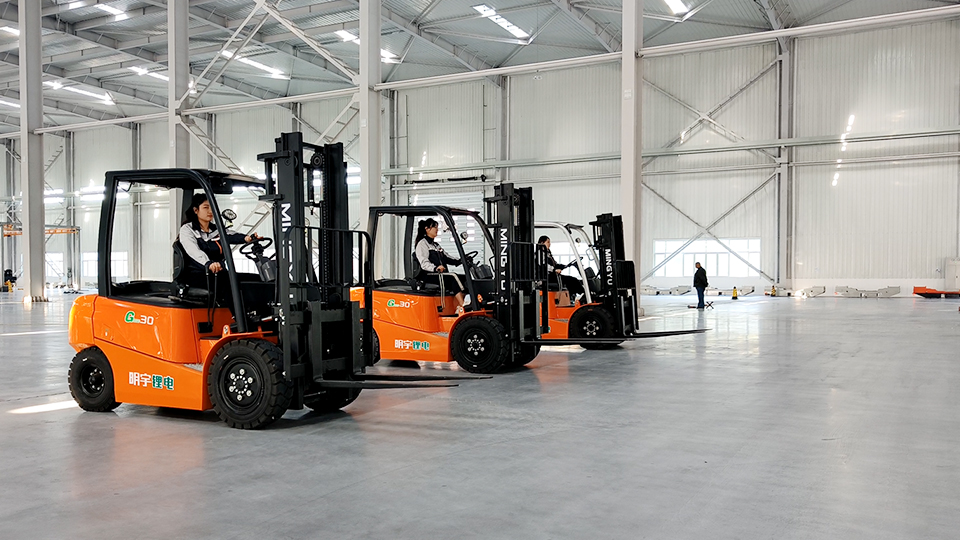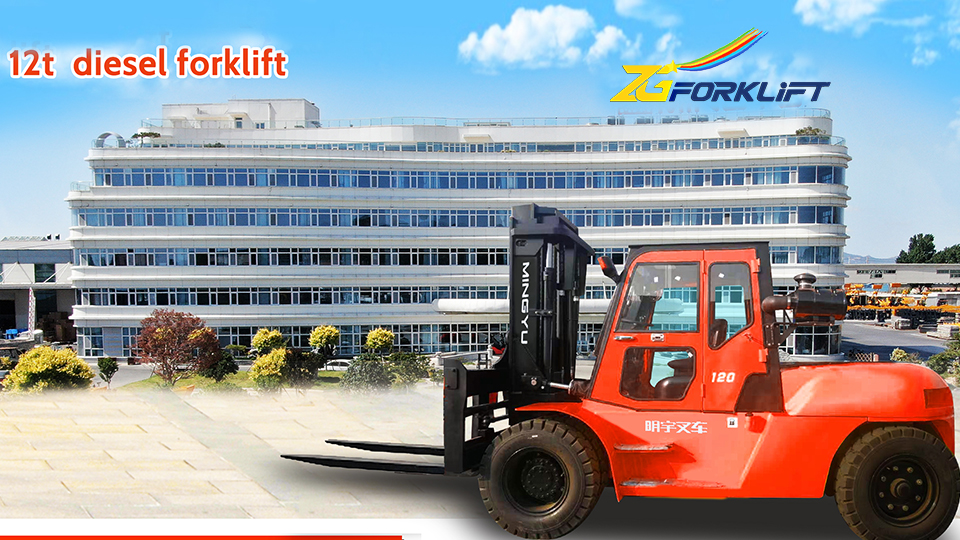
The question of "how to get OSHA certified for a forklift" is common but technically imprecise. The Occupational Safety and Health Administration (OSHA) does not issue individual forklift operator certifications or licenses, nor does it approve specific training programs or third-party providers.
Instead, OSHA sets a mandatory federal standard that dictates how employers must train, evaluate, and certify their employees to operate powered industrial trucks (PITs), commonly known as forklifts. The certification is a formal documentation issued by the employer, attesting that the employee has successfully completed an OSHA-compliant training and evaluation program.
This comprehensive technical article will detail the exact requirements under OSHA standard 29 CFR 1910.178(l) (Powered Industrial Trucks) and 29 CFR 1926.602(d) (Construction), outlining the mandatory three-part process, the necessary content, and the ongoing requirements for maintaining certification.

1. The Technical Foundation: OSHA's Mandate
OSHA mandates that only trained and authorized operators shall be permitted to operate a powered industrial truck. The training program must ensure that the operator is competent to operate a powered industrial truck safely, as demonstrated by the successful completion of the training and evaluation.
A. The Three Mandatory Steps to Certification
An OSHA-compliant forklift certification is not achieved by simply passing an online test. It is a blended process that requires three distinct components, all of which must be completed under the direct supervision of the employer or a qualified person designated by the employer.
Phase Description Key Requirement
I. Formal Instruction Classroom-style learning that provides the theoretical knowledge base. Must cover all OSHA-required topics (Vehicle- and Workplace-related).
II. Practical Training Hands-on, supervised driving and handling exercises in a controlled environment. Must be conducted on the specific type(s) of forklift the operator will use.
III. Performance Evaluation A formal, observed test to ensure the operator can safely perform the job functions in the actual workplace environment. Must be performed by a "qualified person" and formally documented (certified) by the employer.
B. Defining the "Qualified Person"
The training and evaluation must be conducted by persons who have the knowledge, training, and experience to train powered industrial truck operators and evaluate their competence. This person is typically an experienced supervisor, safety manager, or a third-party professional instructor hired by the employer. OSHA does not require a separate "Trainer Certification," but the employer must be able to demonstrate the trainer's competence if challenged.
2. Phase I: Formal Instruction (Theoretical Training)
The formal instruction phase is often referred to as the "classroom" portion and can be delivered via lectures, discussions, interactive computer-based learning (CBT), videos, or written materials. The goal is to provide the operator with the essential knowledge needed to understand the machine, its limitations, and the rules governing its safe use.
A. Vehicle-Related Training Topics (29 CFR 1910.178(l)(3)(i))
The curriculum must cover the general principles of safe PIT operation and must be specific to the type(s) of forklift the employee will be authorized to operate (e.g., Class I Electric Motor Rider, Class IV Internal Combustion Engine Cushion Tire, Class VII Rough Terrain Forklift).
Operating Instructions, Warnings, and Precautions: Understanding the operator's manual and decals.
Vehicle Controls and Instrumentation: Location, function, and operation of all controls (e.g., steering, lifting, tilting, braking).
Engine or Motor Operation: Understanding the power source (electric, LPG, diesel, gasoline), including specific refueling or battery charging procedures.
Steering and Maneuvering: Techniques for safe steering, turning, and handling in tight spaces (understanding rear-wheel steering).
Vehicle Capacity and Stability: The single most critical safety concept. This includes:
The Stability Triangle: The principle that determines a counterbalanced forklift's lateral and longitudinal stability.
Center of Gravity: Understanding how the combined center of gravity of the truck and the load affects stability.
Load Capacity Plate/Data Plate: Knowing how to read the plate and never exceeding the rated capacity.
Inspection and Maintenance: Procedures for pre-shift, pre-operation safety checks and reporting defects.
Attachments and Limitations: Training on the specific attachments (e.g., drum clamps, carpet poles, fork extensions) and how they reduce lifting capacity.
B. Workplace-Related Training Topics (29 CFR 1910.178(l)(3)(ii))
This content must be specific to the physical environment where the operator will work, addressing unique hazards present at the job site.
Surface Conditions: Operating on ramps, inclines, uneven floors, wet or slick surfaces, and dock plates.
Load Composition and Handling: Proper securing, stacking, and unstacking of various loads, including eccentric or unstable loads.
Pedestrian Traffic: Procedures for operating safely around workers, including use of horns, maintaining clear visibility, and following site-specific traffic patterns.
Narrow Aisles and Restricted Spaces: Techniques for navigating limited areas and operating in trailers or rail cars (requiring securement procedures).
Hazardous Locations: Operating in environments with flammable materials, poor ventilation (risk of carbon monoxide buildup), or other classified HAZMAT conditions.
3. Phase II and III: Practical Training and Evaluation
The practical phase is where the theoretical knowledge is applied under supervised, real-world conditions. This is the component that cannot be fulfilled by any online-only course.

A. The Practical Training Requirement
During this phase, the trainee must operate the actual forklift(s) they will use on the job, under the direct supervision of the qualified trainer.
Demonstration: The qualified trainer first demonstrates the correct and safe procedures for each task (e.g., mounting, starting, driving, braking, lifting, parking).
Practice: The trainee then performs the tasks, receiving immediate feedback and correction from the trainer. The operator is permitted to operate the PIT only under this direct supervision and only in a manner that does not endanger the trainee or other employees.
B. The Performance Evaluation (The OSHA Certification)
The evaluation is the final step, serving as the employer's official certification that the employee is competent to safely operate the powered industrial truck.
Objective Assessment: The qualified person must observe the operator performing a series of tasks in the workplace environment. This assessment must be objective and measurable, often utilizing a standardized checklist that covers all aspects of safe operation (e.g., pre-shift inspection, correct load-handling techniques, driving on ramps, parking procedures).
Documentation: Upon successful completion of the evaluation, the employer must formally certify the training.
Certification Record Requirements
OSHA mandates that the employer maintain a certification record containing the following information:
Name of the operator.
Date of the training.
Date of the evaluation.
Identity of the person(s) performing the training and evaluation.
This record serves as the official OSHA certification and must be accessible to enforcement officials. While many training providers issue "wallet cards" or "certificates," the employer's signed and dated record is the document that legally confirms compliance.
4. Maintenance of Certification: Retraining and Reevaluation
Forklift certification is not a one-time credential. OSHA requires operators to maintain competence throughout their employment through mandatory reevaluations and refresher training under specific circumstances.
A. Mandatory Reevaluation (The 3-Year Rule)
The performance of each powered industrial truck operator must be reevaluated at least once every three years (36 months). This ensures the operator has not developed unsafe habits or forgotten critical safety principles. This reevaluation requires a formal, observed practical test just like the initial evaluation.
B. Refresher Training Triggers
Refresher training and subsequent reevaluation are required whenever an operator demonstrates a deficiency in safe operation, or when job conditions change, regardless of the three-year schedule.
Refresher training is mandatory if:
Unsafe Operation: The operator has been observed operating the truck in an unsafe manner.
Accident/Near-Miss: The operator has been involved in an accident or a near-miss incident.
Performance Evaluation Failure: The operator's performance during a scheduled evaluation is deemed unsatisfactory.
Workplace Change: Changes in the workplace environment could affect the safe operation of the truck (e.g., changes in racking, new traffic patterns).
New Equipment: The operator is assigned to operate a different type of truck not previously covered in their initial training (e.g., moving from a sit-down counterbalanced forklift to a stand-up reach truck).
5. Summary and Action Plan for the Prospective Operator
Since the ultimate responsibility and formal certification lie with the employer, the path to becoming an OSHA-certified forklift operator is primarily managed through the hiring company.
Action Plan for the Individual Seeking Certification:
Step Action Compliance Component
1. Satisfy Prerequisites Must be at least 18 years of age (per Fair Labor Standards Act for non-agricultural operations). Minimum Age Requirement
2. Complete Formal Instruction Enroll in an OSHA-compliant course (often provided by the employer, or a third-party online/in-person provider) that covers all required vehicle- and workplace-specific topics. Phase I: Formal Instruction
3. Pass the Knowledge Test Successfully pass the written or online exam associated with the formal instruction portion (often requiring 70% or more). Knowledge Verification
4. Receive Practical Training Work with the employer's designated qualified trainer to receive hands-on instruction on the specific forklift(s) used at the job site. Phase II: Practical Training
5. Pass the Final Evaluation Successfully demonstrate competence and safe operating ability during the observed performance evaluation conducted by the qualified person in the actual work environment. Phase III: Performance Evaluation
6. Receive Documentation The employer records and signs the final certification document, formally authorizing the individual to operate the specific powered industrial truck(s).Employer Certification Record
Final Technical Clarification
It is essential to recognize that a certificate issued by an online course provider only satisfies Phase I (Formal Instruction). No online course alone can provide the complete OSHA certification. The complete certification requires the practical training and on-site performance evaluation tailored to the employer's equipment and workplace hazards, as detailed in the technical standard 29 CFR 1910.178(l)(3)(ii). Compliance requires the seamless integration of all three phases, ensuring theoretical understanding is fully coupled with documented operational competence.
Name: selena
Mobile:+86-13176910558
Tel:+86-0535-2090977
Whatsapp:8613181602336
Email:vip@mingyuforklift.com
Add:Xiaqiu Town, Laizhou, Yantai City, Shandong Province, China